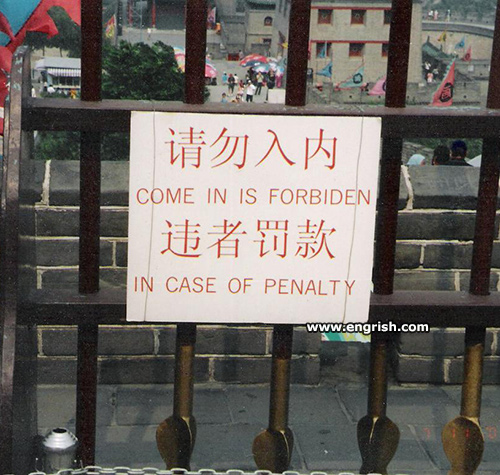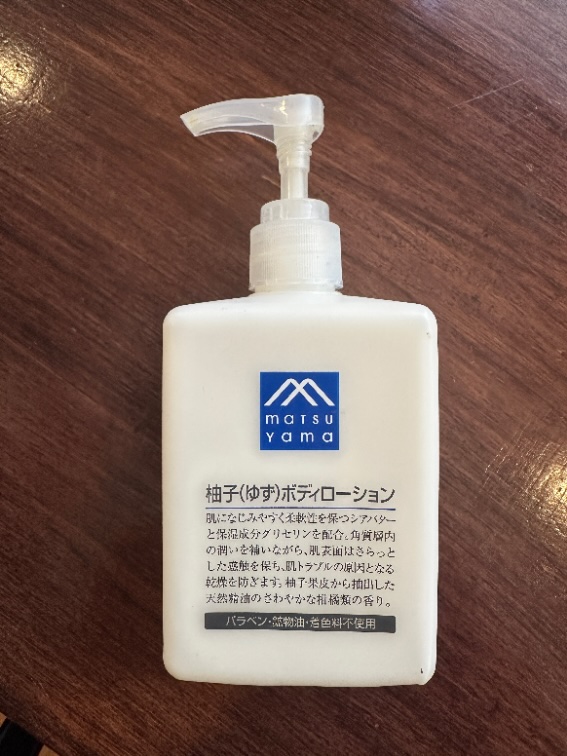Archive for Transcription
A surfeit of katakana words: how do you say "woke" in Japanese?
The Japanese writing system consists of three major components — kanji (sinographs), hiragana (cursive syllabary), and katakana (block syllabary). I would argue that rōmaji (roman letters) are a fourth component. We have rehearsed and rehashed their different lexical, morphological, and grammatical functions so often that I don't want to waste time going over them again now. Since we are focusing on katakana in this post, I will merely mention that their main roles are the following:
- transcription of foreign-language words into Japanese
- the writing of loan words (collectively gairaigo)
- emphasis; to represent onomatopoeia
- for technical and scientific terms
- for names of plants, animals, minerals
- often for the names of Japanese companies
Read the rest of this entry »
Transcription matters
Marco Rubio has been named Secretary of State by newly inaugurated President Donald Trump, swiftly and unanimously approved by the United States Senate, and promptly sworn in by Vice President JD Vance. When it comes to China, our most formidable foe, however, there is a hitch — Rubio is under a travel ban by the Chinese government.
Zěnme bàn 怎么办?("What to do?")
Clearly this will not do. Even China knows that, so their Foreign Ministry has thought of a devilishly clever way to circumvent their own ban.
Beijing changes Rubio’s Chinese name, perhaps to get around travel ban
Changes to official translations are approved at a high level, and could be a way to ease sanctions indirectly. By Yitong Wu, Kit Sung, and Chen Zifei, rfa
2025.01.21
China's morphosyllabic script confronts the world, and itself — with unique challenges.
Beijing has changed the rendering of U.S. Secretary of State Marco Rubio’s name in Chinese, sparking speculation that officials might want to get around their own travel ban, in an apparent olive branch to President Donald Trump, analysts said on Tuesday.
Read the rest of this entry »
A plethora of katakana?
I sent the above photograph of a body lotion (bodirōshon ボディローション) bottle to Nathan Hopson and asked him why it has so many katakana words, also why they have to give a phonological gloss for yuzu, which should be a fairly common word in Japanese (even I know it!).
Read the rest of this entry »
Mongolian text-to-speech, online transliterator of Cyrillic to classical script
From IA:
By way of introduction to what you see below under the asterisks, regarding the (not-always) technical reasons for the paucity of webpages in Mongolian script, see some of the comments here, especially the one at the top (Greg Pringle).
I might mention that the president of Mongolia's webpage in Mongolian script — which he links to — only displays correctly for me in Chrome, not in Firefox and not on my iPhone (Safari).
Read the rest of this entry »
Nebraska: "Flat Water"
When you hear the name "Nebraska", the first thing you think of is probably "corn" and "cornhuskers", at least that was what always passed through my mind.
No longer. Now having come roughly halfway across this long (430 miles) state and finding myself in Central City, I have gained a keen (I would even say "palpable") sense that it means "flat river". That's because, from one end to the other, I'm following Route 30 / Lincoln Highway, and it was easy for the surveyors who laid out the Lincoln Highway (our nation's first transcontinental road) to follow the Platte River. You guessed it, which I also did long ago, that "platte" is French for "flat", and that decidedly is what this river is all about: flat, flat, flat.
Read the rest of this entry »
Unknown language #10, part 2
[This is a guest post by Martin Schwartz.]
"Unknown language #10" (12/1/17) left all stumped, including a broad range of superb scholars of many languages. I have no Rosetta Stone for it, but have something that may be called a Russetta or Rusetta (as in ruse) Bone.
First, the mystery text, which was the focus of Language Log Unknown Language #10, I reproduce it here as was transmitted there:
Ukhant karapet qulkt kirlerek
Iqat ighun chapuq sireleq,
Poghtu Paghytei Piereleq
Azlayn qoghular eliut karapet.
Now, to the above I give a set of verse found in Aleksandr Kuprin's Russian novel Jama ('The Pit'), 1909-1915:
U Karapeta est' bufet
Na bufete est' konfet,
Na konfete est' portret
Ètot samyj Karapet.
'Karapet has a buffet
On the buffet is a bonbon (vel sim.)
On the bonbon is a portrait,
It's the very same Karapet.'
Read the rest of this entry »
Spelling Manchu with Chinese characters
Oh wow this is an AMAZINGLY FASCINATING find! The 'Chinese characters' seem intractable, but are just phonetically written Mandarin syllables (initial, nucleus, coda):
c(e) 策+ e 額 + (e)ng 鞥 = ceng
Next to it a Manchu transcription: ᡮᡝ᠋᠊ᠩI wonder where it comes from? https://t.co/p2T42WANGD pic.twitter.com/z9V2DO5SaC
— Egas Moniz-Bandeira ᠡᡤᠠᠰ ᠮᠣᠨᠢᠰ ᠪᠠᠨᡩ᠋ᠠᠶᠢᠷᠠ (@egasmb) June 4, 2024
Read the rest of this entry »
Mixed script writing in Taiwan, part 2
[This is a guest post by Kirinputra]
To take a step or two back towards the Sad Cripples theme, I had the TV on the other day and the show host — echoing the guest, a dietitian — said this:
“Lán Tâi-oân lâng kóng ‘tāu-leng’; gōa-kok lâng kóng ‘tó͘⁺-nài.’”
(Can't remember if he used Tone 3 or Tone 5 on the last syllable.) This could also be written like this:
“Lán Tâi-oân lâng kóng ‘tāu-leng’; gōa-kok lâng kóng ‘豆奶’ (DÒUNǍI).”
= 咱台灣人講「豆乳」。外國人講『豆奶』(DÒUNǍI)。
Again, he wasn't making a point; he was just summarizing an offhand remark the guest had just made to the same effect. While he seems to be referring to Mandarin speakers as foreigners — and they are, in a meaningful sense — there is no way he meant that. Rather, he & the guest were ultimately both referring to the English word soy milk, but calqued into Mandarin as 豆奶 — also a word in Mandarin, but not generally used in Formosa.
Read the rest of this entry »
Tocharo-Sinica
Language Log has been fortunate to have had several guest posts and numerous comments by Douglas Adams, doyen of Tocharian studies in America (see "Selected readings" for a sampling). Now, stimulated by the recent post on Chinese chariotry, he has written the following ruminations in response.
I read with interest the material on early Chinese chariotry. It was far outside my competence to judge. As you knew, I was most interested in the comment that was looking to the possibility of Tocharian > Chinese lexical borrowings. As you also know, it has long been my suspicion that there was more west > east influence on Chinese language and culture than is generally realized. And the "westerners" involved were most likely to have been Tocharians of one sort or another ("Tocharian D"?). It's probably not only PIE pigs and honey that, via Tocharian, show up in Chinese.
Read the rest of this entry »
Perso-Arabic script for Mandarin, Pe̍h-ōe-jī for Taiwanese: sad cripples?
We have been intrigued by Iskander Ding since encountering him on X/Twitter a while back, several posts from his account having made it onto Language Log (see "Selected readings").
With a handle like his, where Iskandar is the Persian form of the name of the Macedonian king Alexander the Great (256–323 BC) and Ding has an unmistakable Sinitic / Hannic ring to it, we suspected from the start that he is a Hui (Chinese Muslim). So far, though, we have not been able to track down the sinographs for his full Hannic name, which is a bit unusual, where even Mongols, Uyghurs, Tibetans, and other non-Sinitic people are compelled to take Sinographic names.
Iskandar Ding is currently writing a Ph.D. dissertation on Yaghnobi linguistics and culture at SOAS in London (see this page for basic information about him).
Yaghnobi is an Eastern Iranian language spoken in the upper valley of the Yaghnob River in the Zarafshan area of Tajikistan by the Yaghnobi people. It is considered to be a direct descendant of Sogdian and has sometimes been called Neo-Sogdian in academic literature.
(source)
Here is a 53 second video of ID announcing a talk on Perso-Arabic-script Hannic.
Here is the 43.44 talk ("Xiao’erjing – Writing Chinese with Perso-Arabic Letters" – Iskandar Ding | PG 2022) as it actually happened. IA comment: "What he said throughout the talk was pleasing now and then — saying 'Eastern Turkistan' in Uighur for example…".
Here is a 1 hour 22 minute interview with ID. If you click the link it will open at the 18:11 mark, where he speaks of Perso-Arabic-script Hannic . That part ends at 22:40.
The above is based largely on information provided by IA, and the following quotes IA directly:
Read the rest of this entry »
Spelling with Chinese character(istic)s, pt. 5
Serious questions about "religion" in Sinitic
Below the fold is for advanced specialists in Chinese philology, theology, and lexicography. Even for them, it is recommended that readers prepare themselves by reviewing "Spelling with Chinese character(istic)s, pt. 4" (7/4/16).
[This is a guest post by IA]
Read the rest of this entry »

